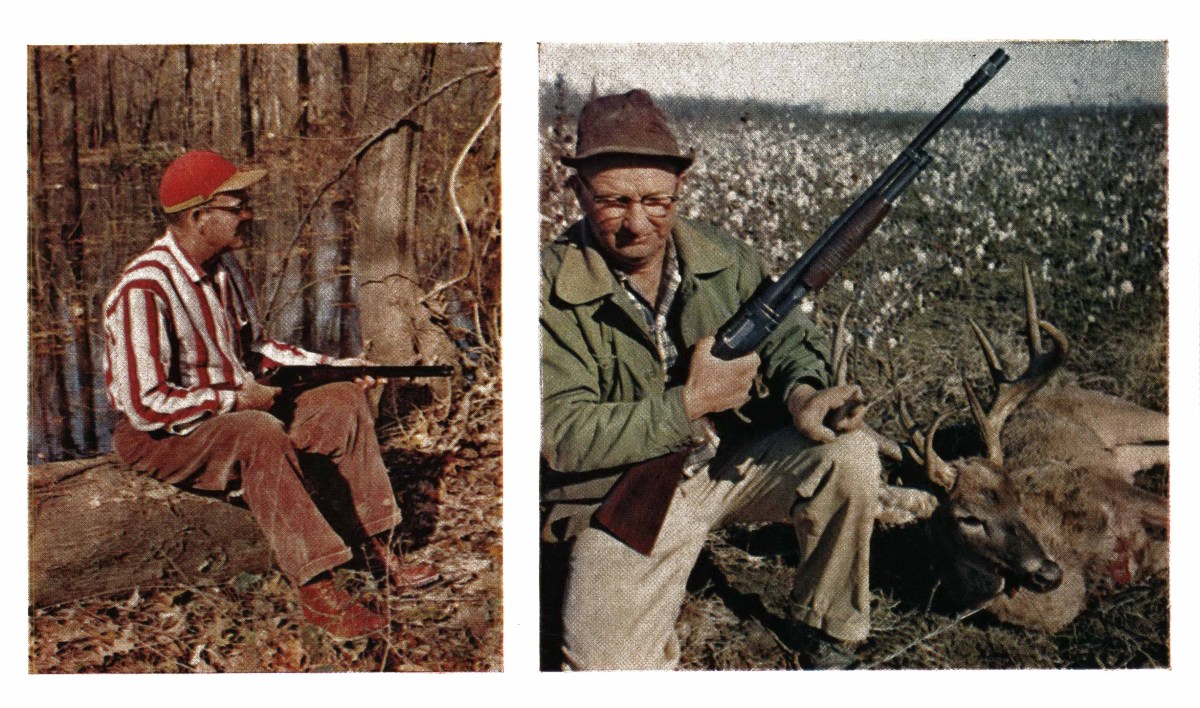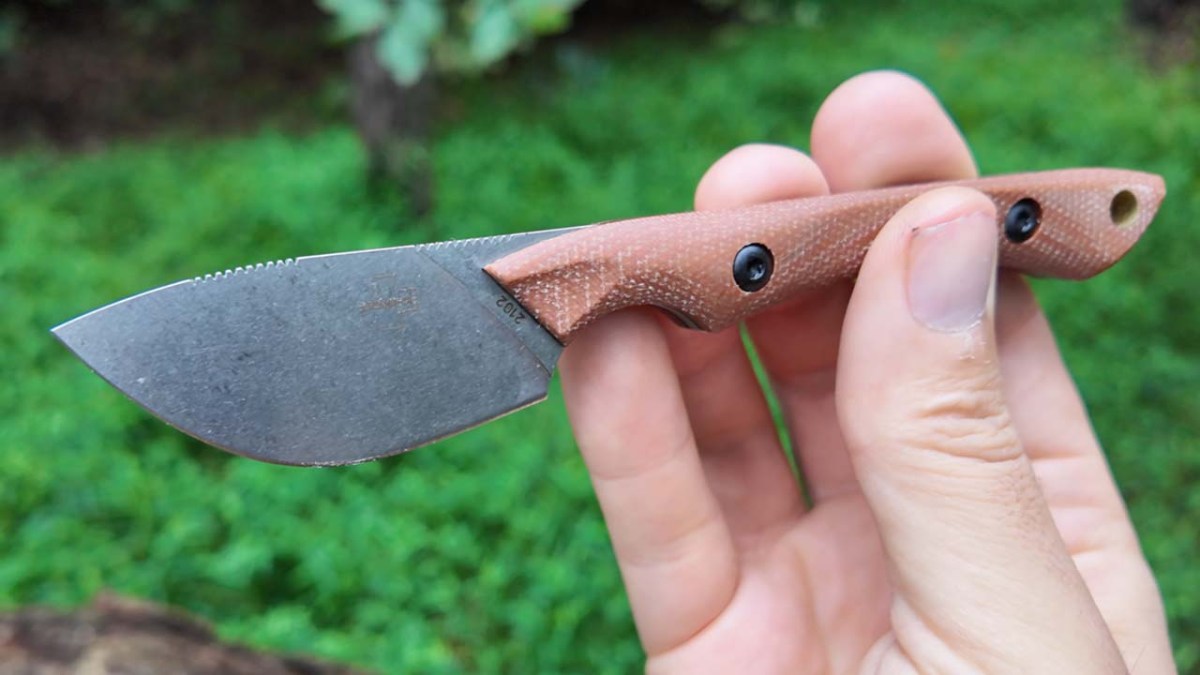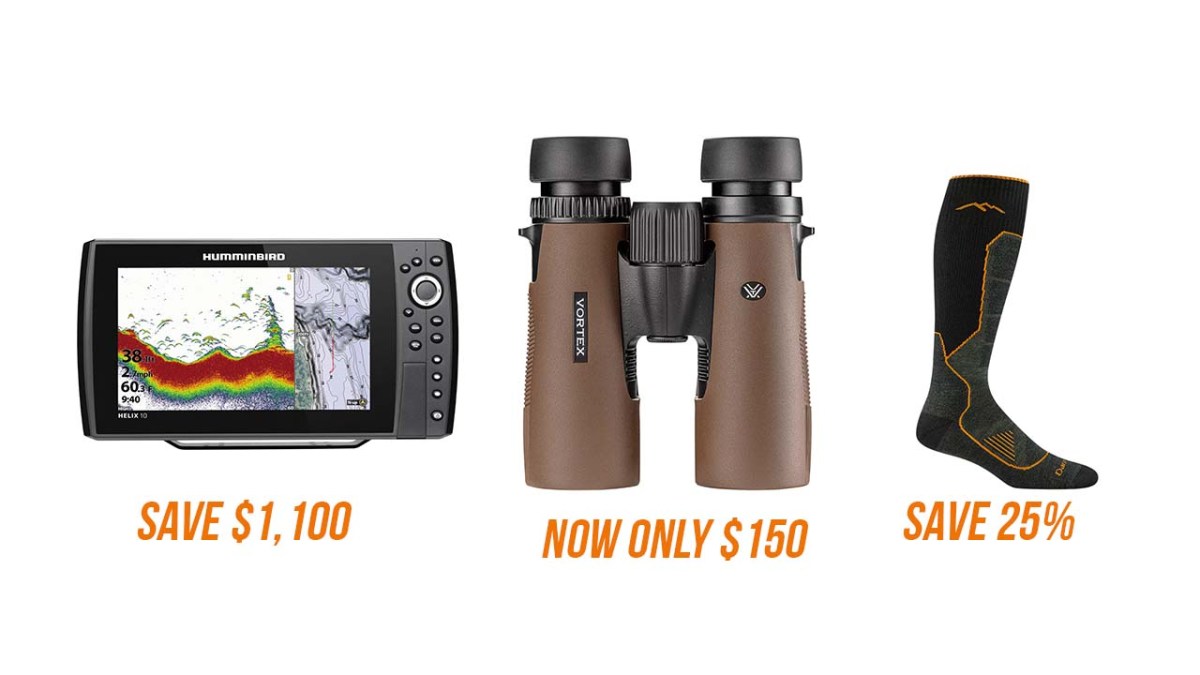Latitude Method 3 vs Tethrd Carnivore: Two-Panel Tree Saddle Showdown
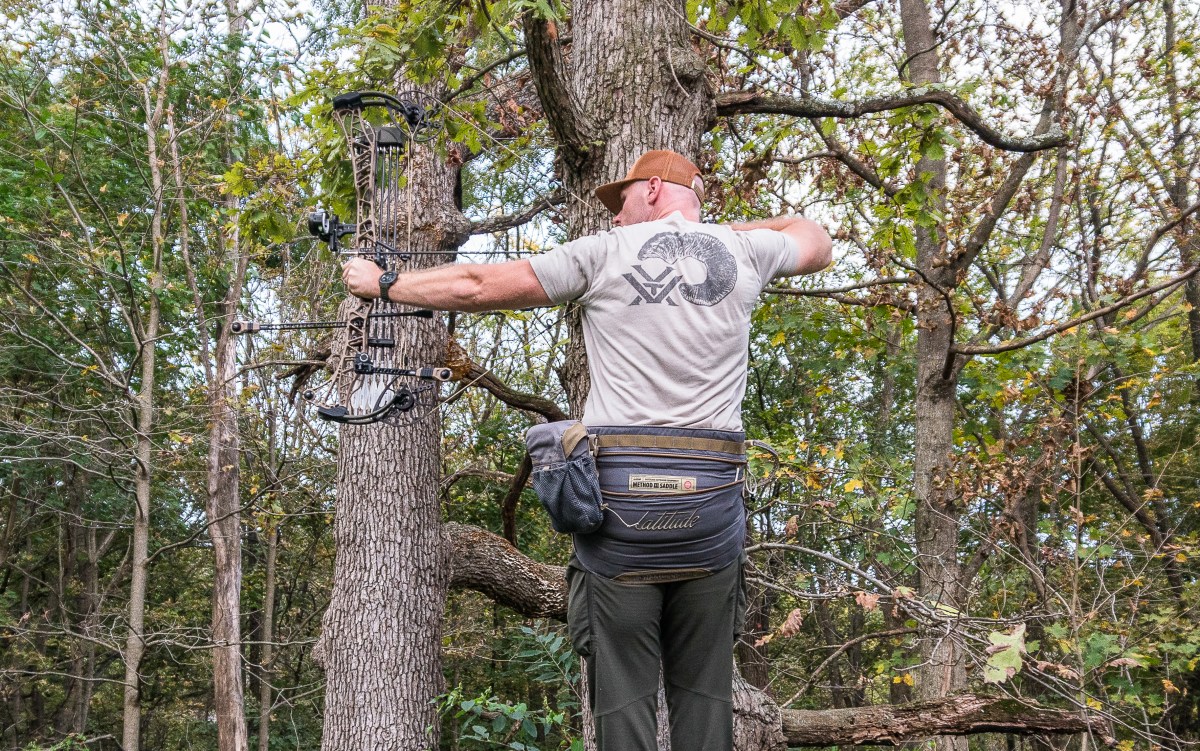
Saddle systems improve every year. What once seemed like a niche piece of gear that lived in the periphery of more mainstream whitetail hunting alternatives, saddle hunting is the beneficiary of the rise in popularity of mobile whitetail hunting. Due to their practicality and minimalistic nature, saddle hunting experienced quite the resurgence. If you’re in the market for a premium saddle, you’re likely debating between the new Latitude Method 3 and Tethrd Carnivore – two of the most advanced saddle systems on the market today.
I tested both of these saddles and compared their comfort, features, weight, and value.
I evaluated the Latitude Method 3 and Tethrd Carnivore based on attributes that are most important to me when buying a saddle. This includes comfort, weight, price, and features that go above and beyond. Both saddles were completely kitted with dump pouches, ropes, and carabiners necessary to climb a tree. I spent at least one hour at hunting height, taking notes regarding comfort, hip pinch, how the bridge moved through loops as I pivoted my hips, and how the features advertised by the manufacturer translated to real-world use. My hour in the tree was split between leaning with the saddles compressed into single-panel mode and with my knees resting against the tree in two-panel mode. I scored the saddles from 1 to 5 was used, with 5 being most comfortable.
Why Two-Panel Saddles
Two-panel saddles aren’t new. However, our obsession with comfortable and versatile hunting gear has put two-panel saddles right into our purchasing crosshairs. I believe two-panel saddles are superior to single or expandable saddle’s because they can function as a single panel, yet retain the ability to deploy a second panel for superior comfort for long sits. When comparing the Latitude Method 3 and Tethrd Carnivore, all of these features are packaged into a system that weighs less than 3 pounds. As a result, whitetail hunters can hunt virtually any tree with an ultralight system that isn’t hindered by comfort.
See It
Key Features
-
Weight: 2 pounds 7 ounces -
MOLLE webbing: 1 row on waist belt (top panel) -
Waist belt: prusik knot -
Leg straps: removable webbing strap with G-hook -
Bridge type: Latitude’s proprietary rope-style “Butter Bridge” -
Special features: metal-free construction, magnetic Quick-Connect System attaches panels while on the move -
Comfort: 5 -
Price: $299.99
I think the Latitude Method 3 is the most comfortable saddle on the market. When compared directly to the Tethrd Carnivore, the first observation you’ll notice is the extensive padding stitched into the panels of the Method 3. The padding is water-resistant and feels like you’re sitting on a padded, insulated hammock when deployed into two-panel mode. The Method 3 earned a perfect comfort score of 5 during the test.
As is usually the case, comfort comes at a slight weight penalty. At 2 pounds 7 ounces, the Method 3 is on the heavier end of saddles. Mine weighed in at 4 pounds 1 ounce once fully set up with dump pouches and ropes. The weight is certainly tolerable, and the saddle’s fit makes the 4 pounds easy to carry. However, if you’re the kind of person who would prefer to stow your saddle in a backpack rather than wear to and from your hunting location, the extra bulk caused by the padding should be noted.
All two-panel saddles utilize a system to attach the panels together during transport or sits. The Method 3 uses a continuous strip of magnets built into the panels that hold them tightly together. Re-attaching the panels together is foolproof – just slide the bottom panel up towards your waist and the magnets will inevitably find each other and snap quietly together. I was surprised at how strong the magnets held together. Even on long walks through thick brush, I never experienced the panels detaching. However, it’s worth noting that while the panels stayed magnetized together, the excessive padding got warm while walking to my hunting location on early season sits.
Once you detach the bottom panel to run the saddle in two-panel mode, you can use a drawstring located at the point of your hips to retain the perfect fit. Simply adjust slack out of the drawstring, and the next time you want to run it in two-panel mode, deploy the panel until you run out of slack – it’ll stay in the same spot with repeated use, which eliminates the fuss of adjusting the saddle’s fit to your body. As a bonus, the slack material in the drawstring stoppers also functions as a built-in stick hauler.
The Method 3 features no metal-on-metal contact. In fact, very few pieces of metal actually exist on the saddle, and the few that do (3 small G-Hooks for the removable leg straps) feature reinforced webbing to prevent unnecessary noise. It’s almost excessive how far Latitude went to make this saddle silent, but it’s certainly something I appreciate.
In addition, the waist belt uses a prussik knot, unlike other saddles that use metal clips. I was skeptical at how the prussik knot would stay in place once adjusted to my waist, but found it to be easy to adjust, solid once placed, and comfortable.
I added Latitude’s brand-new Operator Pouch to my Method 3, which I think is the best accessory on the market. The Operator Pouch is easy to operate with one hand and maintains its structure when empty, which makes it easy to stow gear away in low light. A fleece liner makes for silent operation, and quick-detach design uses buckles to remove it from your saddle to maintain a sleek profile while hunting.
At $299, the Method 3 is the best value in the test. I was impressed by the value of the Method 2 one year ago (which also retailed for $299). Given the upgraded features, functionality, and materials in the Method 3, I’m pleasantly surprised Latitude didn’t raise prices despite packing even more value into a top-notch product.
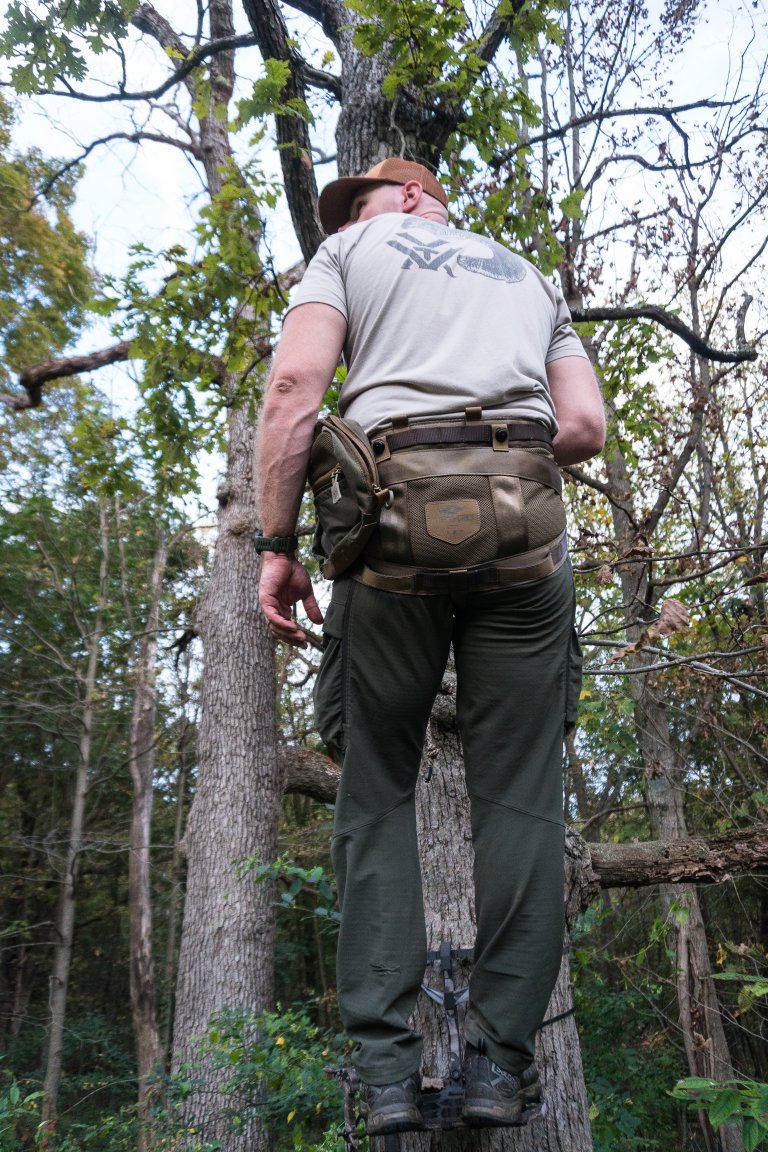
See It
Key Features
-
Weight: 2 pounds 4 ounces -
MOLLE webbing: 2 rows – 1 on waist belt on top panel, 1 on bottom of bottom panel -
Waist belt: ADF Raptor Buckle -
Leg straps: webbing strap with quick connect buckle -
Bridge type: Adjustable AmSteel with integrated Bridge Barrels that allow panels to float freely -
Special features: Rapid Accessory Deployment (R.A.D.) system connects bottom panel to top, Freedom Belt allows belt to float freely within the waist channel (to avoid belt stacking) -
Comfort: 4.75 -
Price: $329.99
While the Method 3 is the most comfortable, the Tethrd Carnivore is the king of versatility due its packability and two-panel design. It can be both a minimalist saddle and a 20-foot-high lounge chair.
The two-panel design is comfortable and earned a 4.75 in the comfort category, respectively. At 2 pounds 4 ounces, the Carnivore is a bit lighter than the Method 3. While the few ounces might not seem like much, the Carnivore’s breathable mesh fabric doesn’t maintain a rigid structure like the Method 3. While this might seem like a simple observation, it’s a detail that goes a long way if you prefer to stow your saddle inside a backpack during long hikes. The mesh fabric of the Carnivore can be folded into a small ball that doesn’t take up unnecessary room in your pack.

The Carnivore’s panels connect using Tethrd’s proprietary Rapid Accessory Deployment (R.A.D.) buttons. To disconnect the panels, pull the R.A.D. button away from your waist and drop the bottom panel to your desired spot. Reconnecting them takes a bit of familiarization since you’re connected two small objects to each other, but once connected, the panels aren’t going to break loose.
The Carnivore’s Quad Lock UtiliBridge is an entirely new bridge system to Tethrd saddles. I’m always skeptical of knots and extra ropes on any saddle, but I was impressed at how simple the Quad Lock functions. Similar to the Comfort Channels on previous Tethrd saddles, the Quad Lock system allows you to adjust tension higher or lower on your hips. Bridge Barrels come installed on the saddle and allow the bridge to float freely, creating effortless micro adjustments in the tree.
During setup, I accidentally pushed my Bridge Barrel through the knot while testing adjustability. I was immediately nervous I’d made a mistake I couldn’t fix without help from YouTube, but was surprised at how easily the Bridge Barrel installs.
At $329.99, the Carnivore is comparably priced to the Method 3 and other saddles on the market.
If all-day comfort is your top priority while saddle hunting, the Method 3 has the edge. It’s plush, weather-resistant padding and rigid profile make for one of the most comfortable saddles I’ve ever used. The panels are incredibly easy to deploy courtesy of the Method 3’s integrated magnet, and because the magnet is integrated throughout the entire panel, it’s just as easy to re-attach. Latitude also has superior accessories and dump pouches when compared to Tethrd, and while they add even more rigidity to an already robust system, they’re spacious, easy to use, and functional.
However, if you want a saddle that can compress into itself while still offering two-panel versatility, the Tethrd Carnivore is an excellent choice. In addition to the Carnivore’s packability, I also prefer its Amsteel bridge over Latitude’s rope bridge.
Read the full article here






